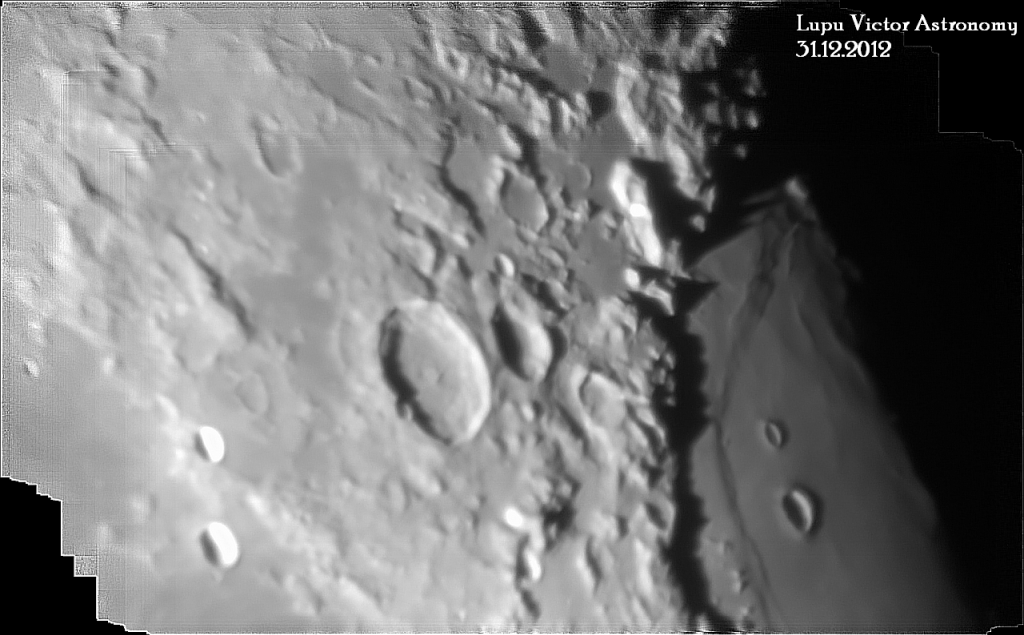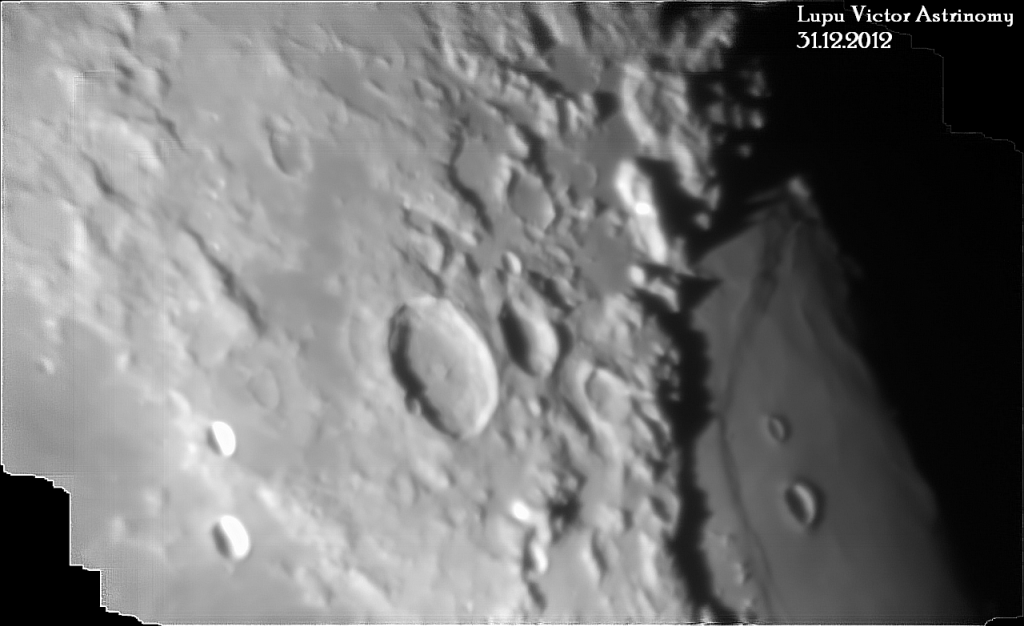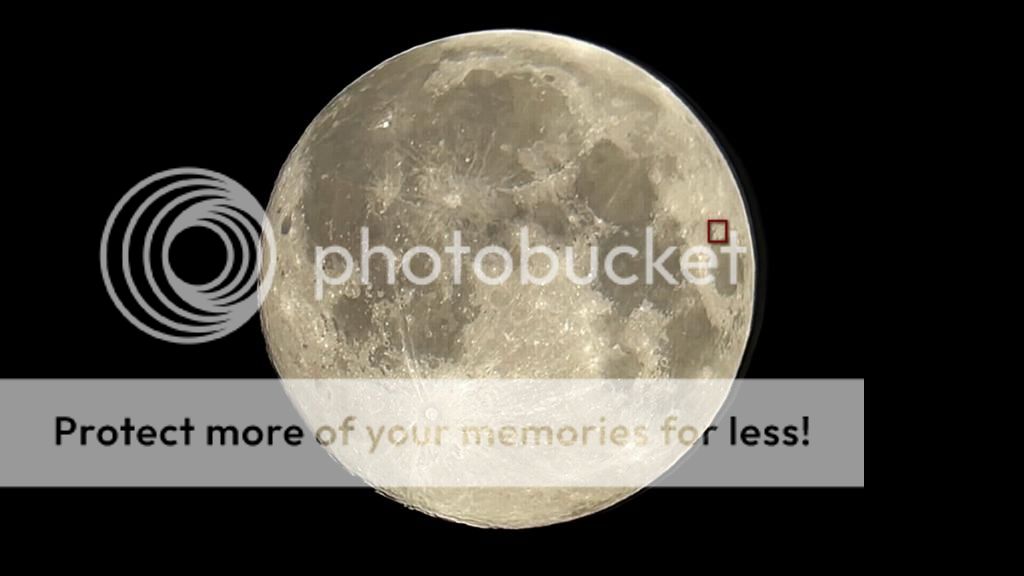 |
| 462 frames at 85% best quality in Registax |
 |
| 508 frames at 85% best quality in Registax |
 |
| 912 frames at 75% best quality in Registax |
In the pictures above, there are many interesting features observed on the eastern Moon. On the right, notice half of Mare Crisium, upper west (the other east half is in shadow) and left in pictures, notice craters of different sizes, located north-west of Crisium basin.
This basin, is surrounded by mountains in a collar shape, which in these lighting conditions is very highlighted and can be likened to a whipped cream frosting around a pie.
West of Mare Crisium, we see two craters, a big one, named Macrobius (64 km), and to its east a smaller one called Tisserand (37 km). Macrobius is perfectly round in shape, but from Earth is seen as having an oval shape. On the south-west of it, notice a small crater named Macrobius C (10 km).
West of Macrobius, notice a long spot with a dark color. This is Lacus Bonitatis.
On Mare Crisium, the view is magnificent in this light. Dorsum Oppel is seen very well, a very nice feature that can be compared to a "vein" that runs parallel to the edge of the basin.
To the east of Dorsum Oppel, observe two craters: Peirce (19 km) (larger), and Swift (11 km) (smaller).
Images are processed in Registax of a video that have taken more shots, merged to form a single image.
Age of the Moon: 17 days
Phase: 93% (0% = New, 100% = full)
Distance: 394.960 km
Optics: Celestron C8-Newtonian telescope, 20mm Plossl, 2x Barlow
Mount: CG5 (EQ5) motorized
Camera: Sony CX130
Filter: no
Date: 31/12/2012
Location: Baia Mare, Romania
Processing: Registax, FastStone Image Viewer




 Tuesday, June 18, 2013
Tuesday, June 18, 2013
 Unknown
Unknown



 Posted in:
Posted in: 


0 comments:
Post a Comment